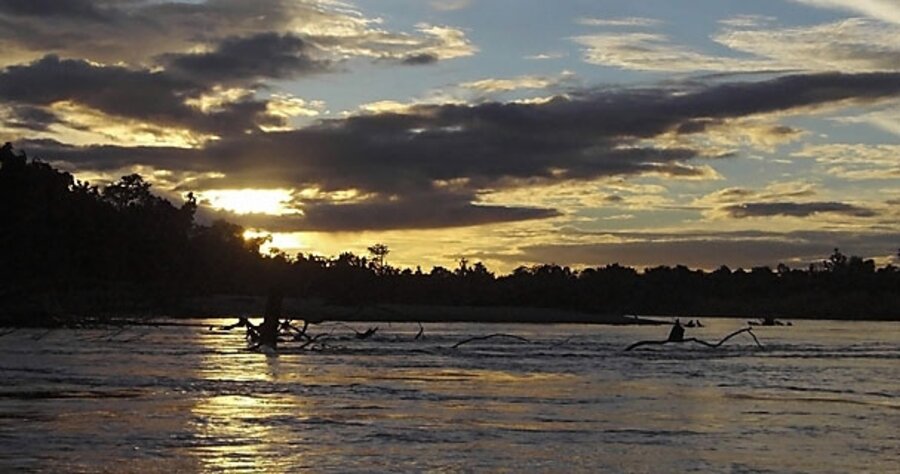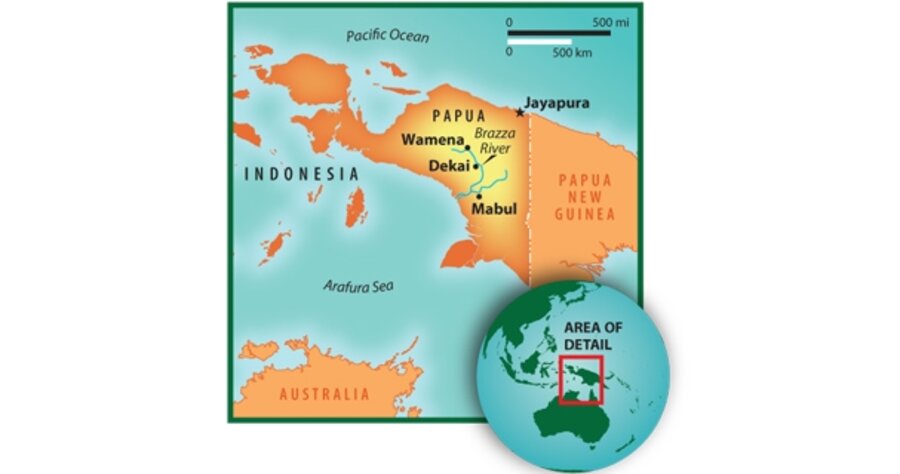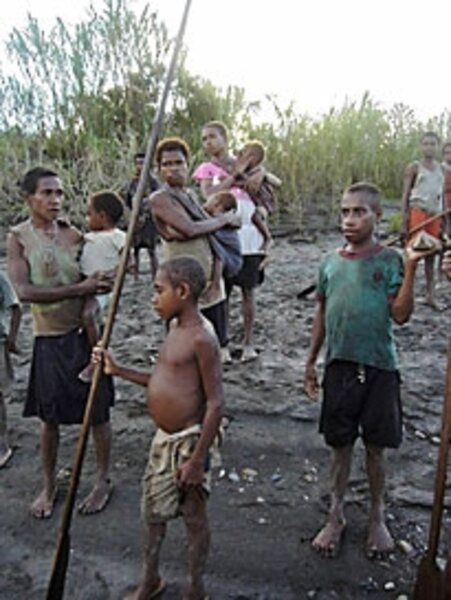Jungle diary: I set out in search of Papua’s cannibals.
Loading...
| Dekai, Indonesia
Part 1 of a four-part series. Part 2 | Part 3 | Part 4
Why Papua? My mom asks me. And where is it, anyway? I have no immediate answers. But a week later I have not only found it on a map and purchased all forms of cool camping paraphernalia (think quick-dry towels and waterproof socks) but also come up with a philosophy to explain the importance of voyaging across the world to this tropical land. My mom closes her eyes, raises her eyebrows, and wishes she had normal children.
The sparsely populated island of New Guinea, the second-largest island in the world after Greenland, is divided between two countries: the independent nation of Papua New Guinea in the east, and the Indonesian Papua in the west – formally known as Irian Jaya. More than 75 percent of Papua is covered by impenetrable jungle, and is home to a wide diversity of plant and animal life, as well as an array of indigenous, so-called “primitive” tribes – many of whom have little or no contact with the world outside.
Believed to number some 3,000 to 4,000 people, the Korowai of southeastern Papua are one such tribe. They were “discovered” in the 1970s but remain isolated. They hunt with bows and arrows, subsist for weeks on roots and beetle larvae, are illiterate, and don’t wear clothing. They practice polygamy, believe in witchcraft, and live in scattered treehouses some 25 feet off the ground. They are also thought to be among the last people in the world to practice cannibalism.
Thoughts of traipsing into the jungle to meet Korowai begin to fill my imagination. “Are there actually tribes with no knowledge of modern life?” I wonder. “Is cannibalism still practiced?” “Is the jungle really so dense you can’t get through it?” “Might such a trip be a good way to lose weight?” And beside all this: “Why is all this ‘otherness’ so inherently compelling to me?”
That last is a good question to chew on. The answer probably has much to do with trying to understand myself. Perhaps seeing how others make sense of the world around them will give me some insight into my own. “Good luck,” says my brother.
I set out with Adam, a TV producer and fellow searching soul, who has a three-week vacation. He packs unread New Yorkers in a special watertight pouch, buys a spear gun (“for fishing, idiot,” he explains when he sees my face), and we set off, stopping for lattes and mini-ginger muffins at our favorite hip Tel Aviv cafe en route out of the country.
The journey to Papua is not short. We drive across the border to Jordan and from there fly to Qatar, watching the latest Indiana Jones movie on our personal TV monitors and daydreaming about discovering new tribes. After a seven-hour layover, we get on another flight – 12 hours – to Jakarta, where it turns out (surprise!) the spear gun sticking out the top of Adam’s knapsack had been offloaded in Doha, Qatar.
Twenty-four hours and many new friends at the Qatar Airways lost and found office later, we are back on track, with a complete luggage set. We fly overnight to Jayapura, the capital of Papua, and on to Wamena in the highlands. It’s pouring rain, dark, and buggy as we leave the airstrip, and we speak not one of the reported 300-odd languages used here. Male members of the Dani tribe – best known for their kotekas, conical gourds used to cover their privates – wander around town wanting to shake hands.
We begin to realize that part of the reason so few tourists come to Papua (fewer than 800 last year, according to The Lonely Planet guidebook) is not solely because no one is as intrepid as we are, it’s also because no one is as uninformed. Traveling into the jungle, it quickly turns out, is not only dangerous, time-consuming, and physically challenging – it costs a fortune. Who knew, for example, just how expensive hiring a motorized canoe could be?
We spend days negotiating, finally putting our faith (and close to $3,000) in the hands of our newfound guide and translator, Isak. And then off we go, by small plane – the cost of which is calibrated according to one’s weight – to Dekai, a dusty village on the edge of the Brazza River.
There, we meet up with Lakor, a young cook who does not stop smiling and who knows how to make rice topped with instant Ramen noodles and nothing else. He joins our party and we spend another two days in protracted renegotiations over money while swatting mosquitoes and eating cookies filled with pineapple cream.
Finally, armed with just about enough information for a PhD thesis on motorized canoes in Papua, we pick up our travel permits from the local police chief, lower ourselves into the dugout, and motor 10 hours downriver, mainly in pouring rain, to the improbably even smaller village of Mabul.
Moving right along, we recruit four Korowai tribe teenagers who will be our porters: Gershon, who has the use of only one leg; silent Lucas; Solomon, who is adorned in colorful beads; and little Titus, whose father, we are told, was eaten by the Kombai tribe last year.
A week and a day after leaving home, we march bravely into the jungle. I immediately fall off a log and ram my left shin. The adventure has begun.







